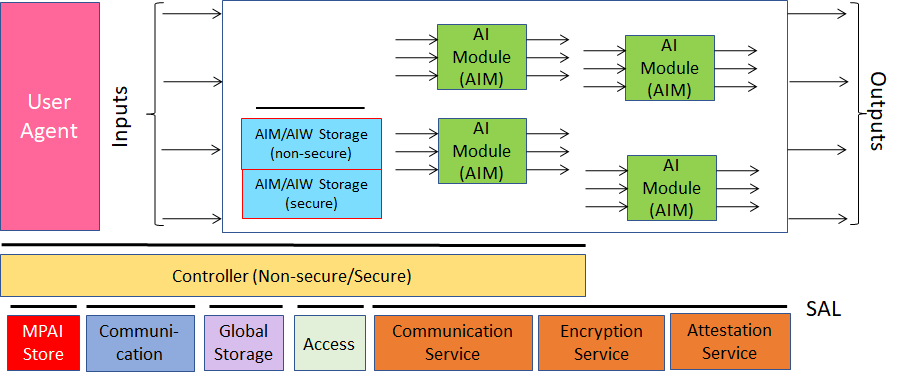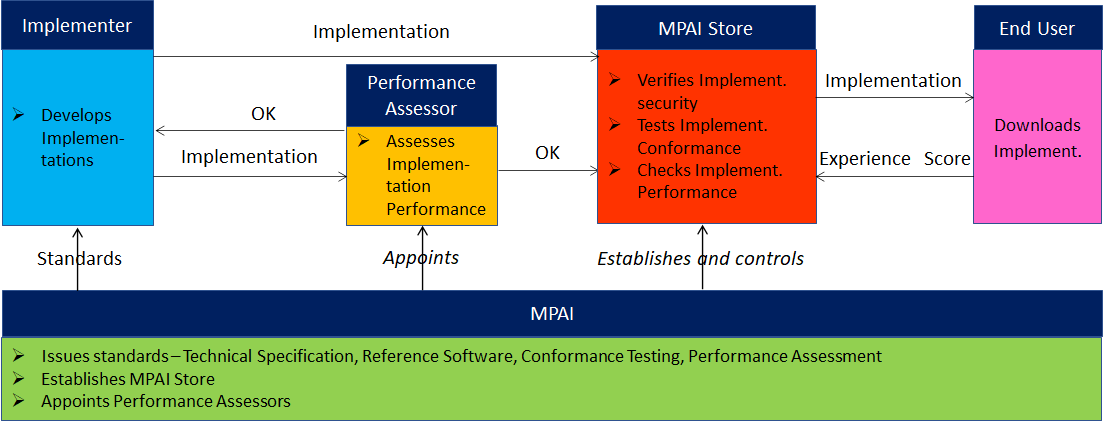(Informative)
In recent years, Artificial Intelligence (AI) and related technologies have been applied to a broad range of applications, have started affecting the life of millions of people and are expected to do so even more in the future. As digital media standards have positively influenced industry and billions of people, so AI-based data coding standards are expected to have a similar positive impact. Moving Picture, Audio, and Data Coding by Artificial Intelligence (MPAI) has been established to develop standards that promote the efficient use of data especially using Artificial Intelligence technologies.
The accomplishment of the MPAI mission is facilitated/enabled by two foundational Technical Specifications.
Technical Specification: Artificial Intelligence Framework (MPAI-AIF) specifies an environment called AI Framework (AIF) enabling initialisation, dynamic configuration, and control of AI Workflows (AIW) including interconnected AI Modules (AIM) as depicted in Figure 1. AIWs are specified by their functions, input/output data, and AIM topology and AIMs are specified by their functions and input/output data in a technology-agnostic fashion. MPAI-AIF can support small- and large-scale high-performance components and enables solutions with improved explainability.

Figure 1 – The AI Framework (MPAI-AIF) V2 Reference Model
Technical Specification: Governance of the MPAI Ecosystem identifies the following elements:
- Standards, i.e., the ensemble of Technical Specifications, Reference Software, Conformance Testing, and Performance Assessment.
- Implementers and Integrators of MPAI Technical Specifications.
- MPAI Store in charge of making AIMs and AIWs submitted by Implementers available to Integrators and End-Users.
- Performance Assessors, independent entities assessing the performance of implementations in terms of Reliability, Replicability, Robustness, and Fairness.
- End Users.

Figure 2 – The MPAI Ecosystem

